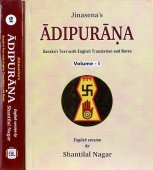Lalitavistara, Lalita-vistara: 9 definitions
Introduction:
Lalitavistara means something in Buddhism, Pali, Hinduism, Sanskrit. If you want to know the exact meaning, history, etymology or English translation of this term then check out the descriptions on this page. Add your comment or reference to a book if you want to contribute to this summary article.
In Buddhism
Mahayana (major branch of Buddhism)
Source: Brill: Śaivism and the Tantric Traditions (mahayana)Lalitavistara (ललितविस्तर) refers to one of the Navadharma (“collection of nine texts”) employed for ritualistic practices in Kathmandu Valley, in the era of Mahindra Vira Vikram Shah (r. 1955–1972).—Cf. Tuladhar–Douglas 2006, 144–147 and von Rospatt 2015, 819–821. The latter remarks that “these canonical works are not so much studied for their content as liturgically recited or put to other ritual uses”.

Mahayana (महायान, mahāyāna) is a major branch of Buddhism focusing on the path of a Bodhisattva (spiritual aspirants/ enlightened beings). Extant literature is vast and primarely composed in the Sanskrit language. There are many sūtras of which some of the earliest are the various Prajñāpāramitā sūtras.
Tibetan Buddhism (Vajrayana or tantric Buddhism)
Source: OSU Press: Cakrasamvara SamadhiLalitavistara (ललितविस्तर) is the name of a deity [i.e., oṃ lalitavistarāya svāhā], according to the Guru Mandala Worship (maṇḍalārcana) ritual often performed in combination with the Cakrasaṃvara Samādhi, which refers to the primary pūjā and sādhanā practice of Newah Mahāyāna-Vajrayāna Buddhists in Nepal.—

Tibetan Buddhism includes schools such as Nyingma, Kadampa, Kagyu and Gelug. Their primary canon of literature is divided in two broad categories: The Kangyur, which consists of Buddha’s words, and the Tengyur, which includes commentaries from various sources. Esotericism and tantra techniques (vajrayāna) are collected indepently.
Languages of India and abroad
Sanskrit dictionary
Source: DDSA: The practical Sanskrit-English dictionaryLalitavistara (ललितविस्तर).—Name of a work on Buddha's life.
Derivable forms: lalitavistaraḥ (ललितविस्तरः).
Lalitavistara is a Sanskrit compound consisting of the terms lalita and vistara (विस्तर).
Source: Cologne Digital Sanskrit Dictionaries: Edgerton Buddhist Hybrid Sanskrit DictionaryLalitavistara (ललितविस्तर).—m., name of a work (our Lalitavistara): Lalitavistara 4.17; 6.16; 438.20 ff.; Mahāvyutpatti 1331; Śikṣāsamuccaya 203.14; °ra-sūtra, id., Śikṣāsamuccaya 5.12 etc.
Source: Cologne Digital Sanskrit Dictionaries: Cappeller Sanskrit-English DictionaryLalitavistara (ललितविस्तर).—[masculine] T. of a Buddhistic work.
Source: Cologne Digital Sanskrit Dictionaries: Monier-Williams Sanskrit-English DictionaryLalitavistara (ललितविस्तर):—[=lalita-vistara] [from lalita > lal] m. Name of a Sūtra [work] giving a detailed account of the artless and natural acts in the life of the Buddha.
[Sanskrit to German]
Sanskrit, also spelled संस्कृतम् (saṃskṛtam), is an ancient language of India commonly seen as the grandmother of the Indo-European language family (even English!). Closely allied with Prakrit and Pali, Sanskrit is more exhaustive in both grammar and terms and has the most extensive collection of literature in the world, greatly surpassing its sister-languages Greek and Latin.
Nepali dictionary
Source: unoes: Nepali-English DictionaryLalitavistara (ललितविस्तर):—n. a famous Buddhist scripture detailing the biography of Buddha;
Nepali is the primary language of the Nepalese people counting almost 20 million native speakers. The country of Nepal is situated in the Himalaya mountain range to the north of India.
See also (Relevant definitions)
Partial matches: Lalita, Vistara.
Starts with: Lalitavistarapurana.
Ends with: Laghulalitavistara, Sulalitavistara.
Full-text (+3181): Alamarya, Ratnayashti, Maineya, Ratnarcis, Krishigrama, Vasantagandhi, Gunaketu, Harshaniya, Keyurabala, Asecaniya, Amogharaja, Gunagradharin, Samcodaka, Prakshepalipi, Prashantacaritramati, Sarvasarasamgrahani, Purvanimitta, Dharmarati, Gunarashi, Samangini.
Relevant text
Search found 41 books and stories containing Lalitavistara, Lalita-vistara; (plurals include: Lalitavistaras, vistaras). You can also click to the full overview containing English textual excerpts. Below are direct links for the most relevant articles:
The Catu-Bhanavara-Pali (critical study) (by Moumita Dutta Banik)
The second Bhanavara (Introduction) < [Chapter 3 - Subject Matter of the Second Bhanavara]
(1) Dhammacakkappavattana Sutta < [Chapter 4 - Subject Matter of the Third Bhanavara]
The Fo-Sho-Hing-Tsan-King (A Life of Buddha) (by Samuel Beal)
Lives of Buddha (14): Shin-t’ung-yaou-hi-king < [Introduction]
Lives of Buddha (10): Fang-kwang-tai-cwang-yan-king < [Introduction]
Lives of Buddha (1): Fo-pen-hing-king < [Introduction]
Bodhisattvacharyavatara (by Andreas Kretschmar)
Text Section 173 < [Khenpo Chöga’s Oral Explanations]
Bibliography Of Sūtras, Tantras And śāstras
The Mahavastu (great story) (by J. J. Jones)
Buddhist records of the Western world (Xuanzang) (by Samuel Beal)
Chapter 3 - Measures of Length used in India < [Book II - Three Countries]
Chapter 2 - Country of Kie-pi-lo-fa-su-tu (Kapilavastu) < [Book VI - Four Countries]
Introduction (i): Preface to the “Ta-t’ang-si-yu-ki” by Chang Yueh
Bihar and Eastern Uttar Pradesh (early history) (by Prakash Narayan)
Clans and Gana-Sanghas < [Chapter 1 - Political Formation at the time of Buddha]
Related products
